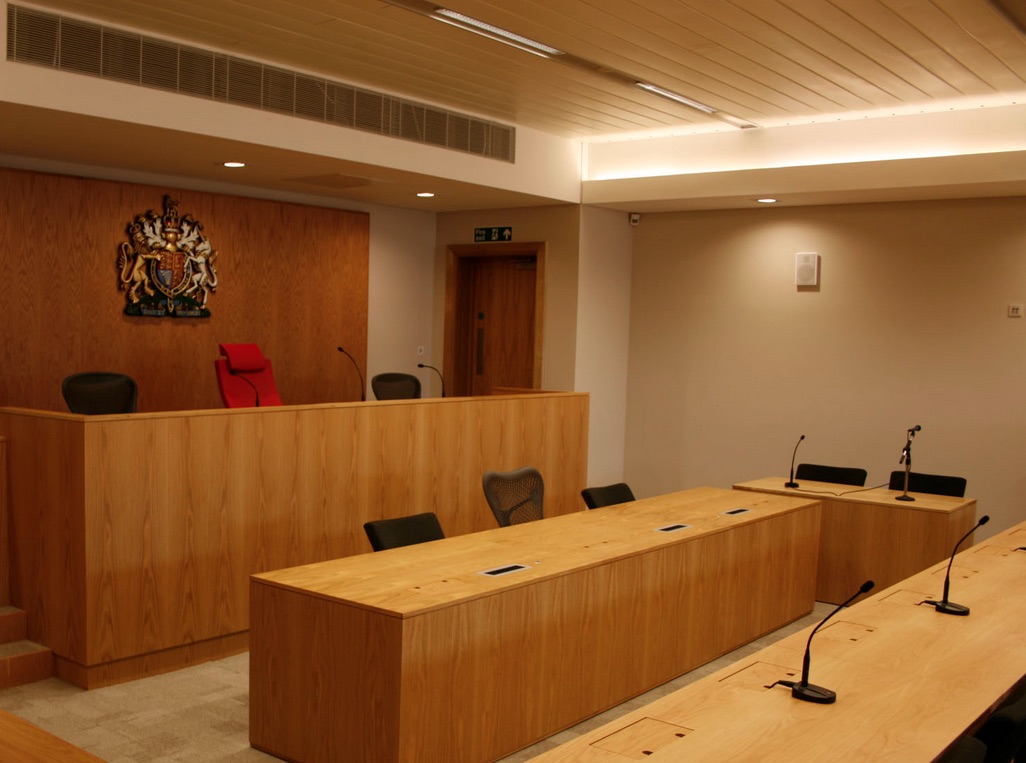Earlier this year journalism students spent a week in Bristol magistrates’ court. It took three days before they spotted their first reporter. The students sat through more than 200 cases which went on entirely unreported. Phil Chamberlain on what the press is missing and why we need more journalists in our courts
It’s been a complaint for many years that courts are not being covered sufficiently by reporters. It requires a particular skill set and too many of today’s depleted newsrooms don’t have the resources to spare. High profile cases still get attention but the vast majority people passing through magistrates’ courts do so anonymously. As a result, the public has little idea how, or indeed if, justice is being served in their area.
In January, the Society of Editors convened a seminar to consider the problem and launched a working group to consider solutions (see here). Meanwhile Her Majesty’s Courts and Tribunals Service is beefing up efforts to get courts to be more open to the media. At the seminar a number of media executives said if they could just be given more money they would employ the journalists to do the job. They directed their anger at Facebook and Google who they accuse of profiting from their labour without putting any money back into the industry. John Whittingdale MP, the former chair of the House of Commons’ culture select committee, has said this issue needs addressing. The NUJ has also highlighted the lack of court reporting. Getting more coverage is, everyone agrees, ‘a Good Thing’.
For something which lawyers, journalists and MPs all agree on there is surprisingly little analysis of court reporting and quite a lot of received opinion. Dr Judith Townend from the University of Sussex has written extensively on open justice. Prof Leslie Moran from Birkbeck looked at the level of court reporting in the local and national press on one day in 2014. Moran found that a few stories dominated most reports. In 2016 the Justice Gap’s Brian Thornton from the University of Winchester repeated the exercise and found a decline in coverage – see here. That was probably due to the fact that he also found that half of local newspapers do not have a court reporter.
Which brings us back to our single reporter and the magistrates court.
The limited number of studies so far have looked at the presence and volume of court reporting. At the University of the West of England we wanted to know what was being missed. If the objective is to send more reporters into court then what might they find?
In a limited pilot study the team had student journalists sit in Bristol Magistrates’ Court for a week in January and record every case. They used a coding sheet to record key details which included not just the charge but also whether any factors such as mental health or drugs were mentioned. Crucially they gave the cases a news worthiness rating. Using criteria developed by Galtung and Ruge and refined by others over the years the students judged how valuable a local newspaper would view each story. Location, seriousness, ease of understanding, the profile of those involved and other factors were all taken into account and a case was given a one for little interest and up to a five for high interest. They also recorded if any reporters were present.
In what staff at the magistrates’ court said was a relatively quiet week the study recorded 240 cases and on average six courts open. Of these cases, the number given a score of ‘3’ or more was approximately 50. The stories included a man charged with a breach of the peace after sparking a terror alert in a shopping centre. A man who had taken natural remedies for a cold found it put him over the drink-drive limit. Bodycam footage showing a man who failed to produce his driving licence being punched by police officers. What was also clear was the number of stories about the process of justice rather than the case itself. Mental health issues were a common part of cases as well as drugs and social security problems. Defendants were not often best served by poor technology and on a number of occasions were unrepresented.
Subcontracting reporting to the CPS
Although we only had a single reporter the media did report some of the cases. They did this by repeating information issued by the Crown Prosecution Service on the cases it successfully saw through in that week. While it is useful to have some indication of the cases heard there are clearly problems with subcontracting the reporting to the CPS. It is highly unlikely that its list of cases would include any which called its competency into question. Yet we know there were cases where the evidence was questioned by magistrates.
The nuance of the justice system is lost in this simple ‘who has been found guilty’ approach. A huge slice of public life is passing unreported and uncontested.
We found the court staff at Bristol magistrates polite and professional and one magistrate wanted to hear much more about our research project. Another wanted us to look at particular areas where the justice system wasn’t working. Yet we are also aware of an incident last year where a citizen reporter was ordered to stop taking notes. Anecdotal evidence from around the country has a similarly mixed picture. What is undoubtedly true is that, however helpful, the general right to information is poor. There are no transcripts, court lists are off limits to non-journalists, mobile phones are treated as weapons of mass destruction.
Bristol has a vibrant media community. As well as its established daily newspaper, it is home to regional BBC and ITV offices, it has MadeInTV, a vigorous community newspaper the Bristol Cable, radio stations from independents such Ujima to commercial and BBC outlets. There are bloggers, tweeters and very popular freesheets in the Voice series. Yet the courts remain largely ignored. We are developing proposals for increasing court coverage subject to getting funding.
We also aim to repeat our study across the country and give a proper picture of the state of court reporting and what is being missed. We think it likely that some places will be well served by agencies, trained independent reporters or traditional media. We hear of others where a reporter has not been seen for years.
Finally, business as usual isn’t going to do justice to justice stories. Simply having more reporters pick up on the few high profile or unusual cases is not going to add greater understanding. Some stories are about patterns better understood through data analysis. Some are about social issues which need following up by specialists. The failure of ‘business as usual’ also extends to the endemic opaqueness of the criminal justice system.
There are some 300 magistrates’ courts in England and Wales. If Bristol is any guide (and it’s the only yard stick anyone has) then each week 15,000 newsworthy stories are potentially being missed. Justice is not being seen to done and we’re all the poorer for it.
The UWE research was led by Phil Chamberlain, Dr Marcus Keppel-Palmer, Dr Sally Reardon and Dr Tom Smith. This article was first published on April 10 2018







